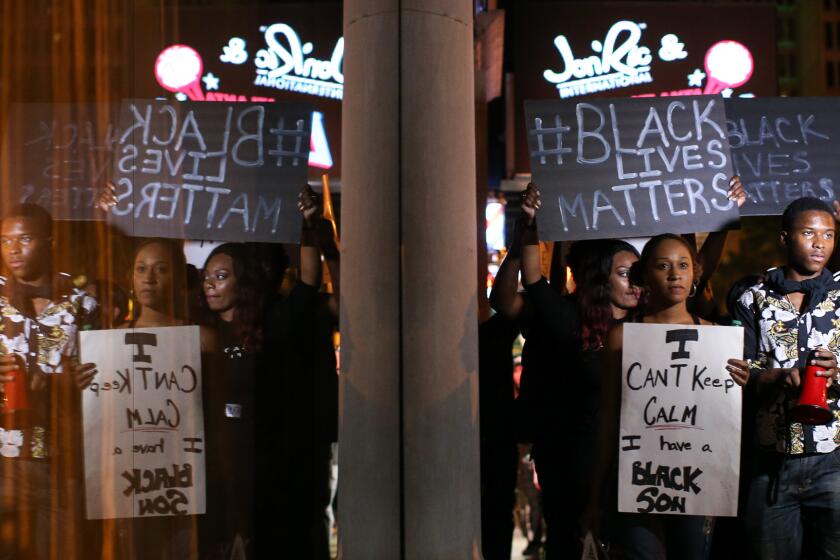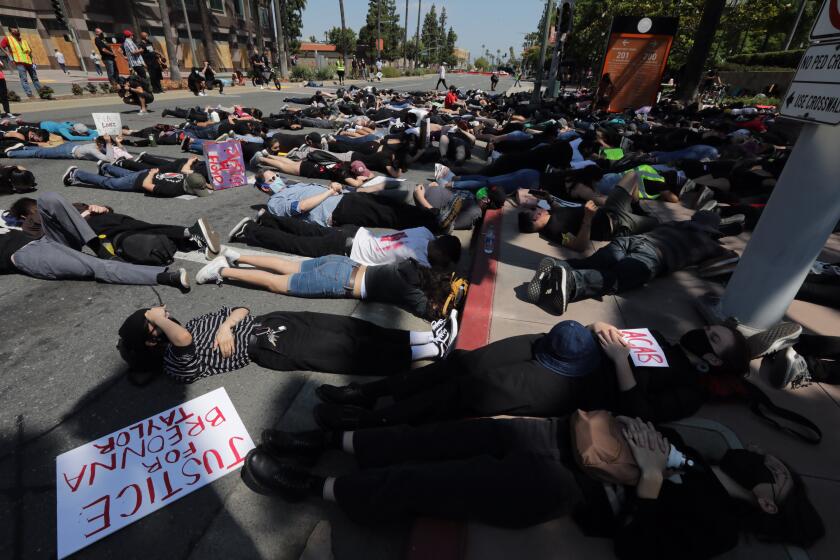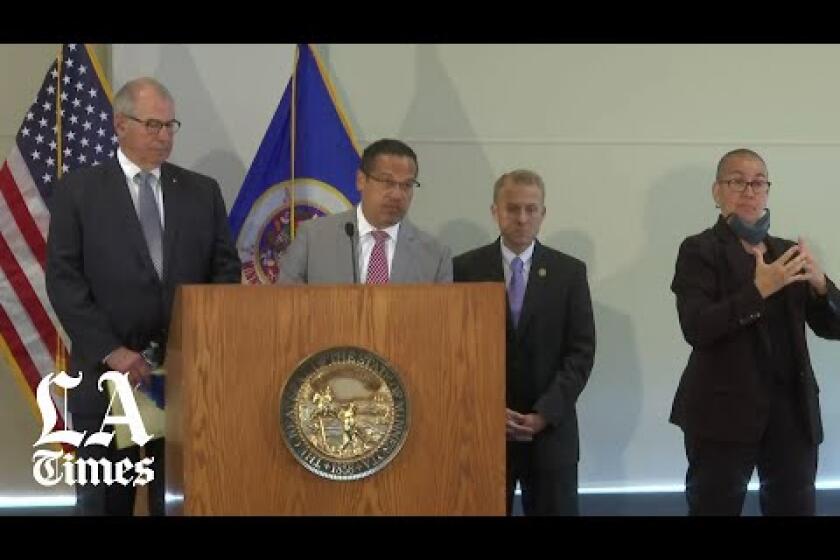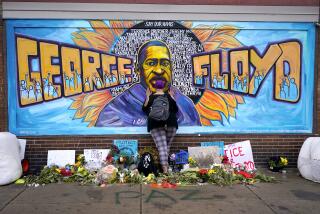8:46: A number becomes a potent symbol of police brutality
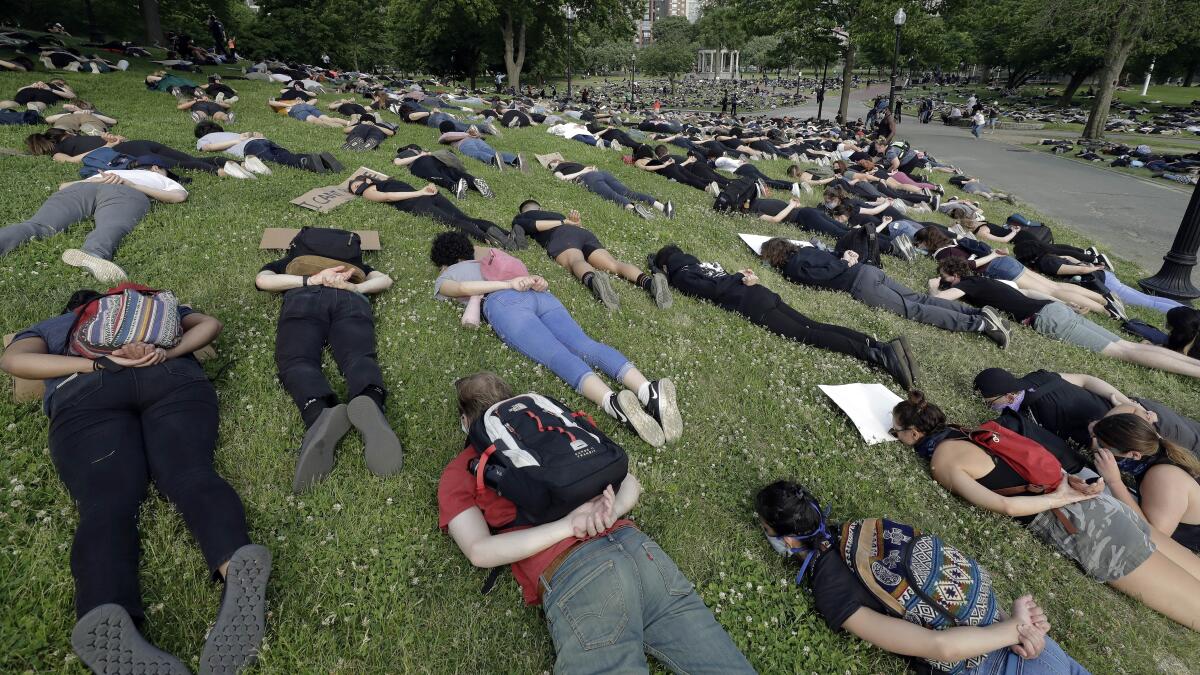
MINNEAPOLIS — All protest movements have slogans. The one sparked by George Floyd’s death has a number: 8:46.
Eight minutes, 46 seconds is the length of time that prosecutors say Floyd, a 46-year-old black man, was pinned to the ground, gasping for breath, under a white Minneapolis police officer’s knee before he died last week.
In the days since, outraged protesters, allies and sympathetic companies have seized on the detail as a quiet way to honor Floyd at a time of angry and sometimes violent clashes with police. Even as prosecutors have said little about how they arrived at the precise number, it has fast grown into a potent symbol of the suffering that Floyd — and many other black men — have experienced at the hands of police.
In Boston and Tacoma, Wash., demonstrators this week lay down on streets staging “die-ins” for precisely 8 minutes, 46 seconds. In Houston, where Floyd had lived for part of his life, churchgoers held candles and bowed their heads in silence, experiencing the crawl of time.
ViacomCBS, owner of MTV and Nickelodeon, stopped its programming earlier this week to air a silent, somber video honoring Floyd for 8 minutes, 46 seconds.
Google asked employees to pause Wednesday for the nearly nine minutes of silence “as a visceral reminder of the injustice inflicted on Mr. Floyd and so many others,” Google and Alphabet CEO Sundar Pichai said in a letter to employees.
“Our black community is hurting, and many of us are searching for ways to stand up for what we believe, and reach out to people we love to show solidarity,” he said.
Facebook, Google and Amazon have all called for racial justice, but their records in some cases tell a different story.
Pausing for a full 8 minutes, 46 seconds helps turn the abstract into a reality, said Monica Cannon-Grant, the founder of Violence in Boston, which organized a Tuesday protest that included the minutes of silence.
“You find that that’s an extremely long time to have someone have their knee in the side of your neck,” Cannon-Grant said.
As she observed the silence, she said she found herself thinking about the safety of her family.
“All kinds of things were going through my head,” she said. “Mainly that I was the mom of four black sons and I’m married to a black man.”
Since George Floyd died, black people are getting messages and money from white people they barely know. Here are the dos and don’ts of being a white ally.
The source of the number is clear, although the calculation behind it isn’t. The criminal complaint charging former Officer Derek Chauvin in Floyd’s murder concludes that Chauvin “had his knee on Mr. Floyd’s neck for 8 minutes and 46 seconds in total. Two minutes and 53 seconds of this was after Mr. Floyd was non-responsive.”
“Police are trained that this type of restraint with a subject in a prone position is inherently dangerous,” it reads.
But the timestamps in the document’s detailed description of the incident, much of which is caught on video, indicate a different tally. Using those, Chauvin had his knee on Floyd for 7 minutes and 46 seconds, including 1 minute and 53 seconds after Floyd appeared to stop breathing.
Prosecutors involved in the case have not responded to requests about the discrepancy.
Fired officer Derek Chauvin is now facing a second-degree murder charge, and three other ex-officers are charged with aiding and abetting.
In this case, one minute is unlikely to be major legal significance.
“Seven minutes is a long time to have a knee on someone’s neck regardless,” said Jared Fishman, a former federal civil rights prosecutor. That said, Fishman said it’s a detail defense lawyers will scrutinize in court.
For those who hold up the number as part of a peaceful call for change, the precise length of time is beside the point. “It should never have happened to begin with,” Cannon-Grant said.
Breaking News
Get breaking news, investigations, analysis and more signature journalism from the Los Angeles Times in your inbox.
You may occasionally receive promotional content from the Los Angeles Times.
It’s not the first time that a particular detail takes on a life of its own, regardless of its strict accuracy.
After the 2014 death of Michael Brown in Ferguson, Mo., word spread in the community that the black 18-year-old had his hands up in surrender when he was shot by a white police officer. The chant “Hands up. Don’t shoot!” quickly became a rallying cry for protesters both in the St. Louis suburb and across the country.
But it never was clear whether Brown actually raised his hands. There were no videos or photos of the shooting. Some witnesses swore to a grand jury that his hands were raised while others swore they were not. Officer Darren Wilson testified to grand jurors that Brown was charging at him, with one hand clenched at his side and the other under his shirt, when Wilson fired the fatal shots.
Several protesters said it didn’t matter if Brown’s hands literally were raised, because his death remained symbolic of wider racial injustices at the hands of police.
More to Read
Sign up for Essential California
The most important California stories and recommendations in your inbox every morning.
You may occasionally receive promotional content from the Los Angeles Times.
